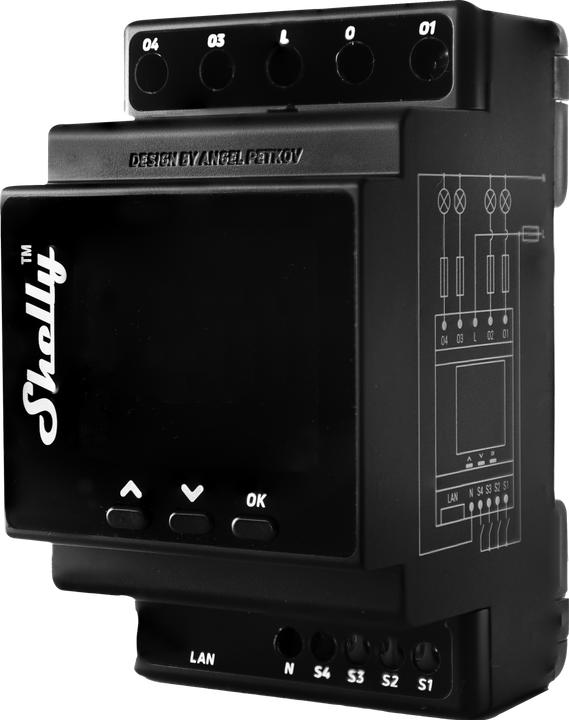
Max Hauri Digital timer, random generator
Type 12
Last updated 1 day ago. Automatically generated content.


Select options and limit the number of products
The type of time switch determines how a timer manages and controls the timing of electrical devices, impacting ease of use and functionality. Selecting the appropriate time switch can enhance convenience and efficiency in everyday tasks, such as automating lights or appliances.
Digital timer
Typical price
48.– to 150.–
Features programmable settings with precise timing options and an easy-to-read digital display.
Ideal for complex scheduling needs, offering flexibility and accuracy for tasks like timed lighting or appliance control.
Bestseller
Mechanical timer
Typical price
14.– to 76.–
Operates through manual dial settings and often includes simple, robust designs.
Suitable for those who prefer straightforward, durable options without electronic components, ideal for basic on/off scheduling.
Bestseller
Remote control adapter plug
Typical price
29.– to 230.–
Allows control of devices via a remote, offering wireless convenience.
Perfect for users seeking effortless control from a distance, enhancing accessibility and comfort in managing home devices.
Bestseller
Roller shutter timer
Typical price
80.– to 110.–
Specialized for controlling roller shutters, typically with specific programming capabilities.
Enhances home security and energy efficiency by automating shutter movements according to user-defined schedules.
Bestseller
The Smart Home factor indicates whether a timer can integrate with smart home systems, enhancing convenience and automation. This factor is crucial for users who want seamless integration with their existing smart home devices, improving control and efficiency.
Compatible
Works with popular smart home platforms, allowing timers to be controlled remotely via apps or voice assistants.
Ideal for tech-savvy users seeking to streamline their home automation, offering ease of use and enhanced functionality.
Bestseller
Not compatible
Does not integrate with smart home systems, functioning as a standalone device.
Suitable for users who prefer manual control or have simpler needs, offering reliability without additional complexity.
Bestseller
Time switch functions allow users to automate device operations based on specific times or schedules, enhancing convenience and energy efficiency. Choosing the right functions can improve user control over devices, optimize performance, and increase security.
LCD display
Typical price
54.– to 190.–
Provides a clear and easy-to-read screen for viewing timer settings and schedules.
Ideal for users who prefer visual feedback and straightforward navigation of timer functions.
Bestseller
App Control
Typical price
76.– to 180.–
Enables remote management of timers via smartphone apps, offering flexibility and convenience.
Perfect for tech-savvy users who value control and ease of use, allowing adjustments from anywhere.
Bestseller
Power failure protection
Typical price
54.– to 170.–
Ensures timer settings are retained during power outages, preventing schedule disruptions.
Great for areas prone to power failures, maintaining reliability and consistency in device operations.
Bestseller
Countdown
Typical price
14.– to 51.–
Allows users to set a timer to count down to zero, triggering device actions when complete.
Useful for tasks that require precise timing, such as cooking or exercise routines.
Bestseller
Burglar deterrence
Typical price
54.– to 190.–
Simulates occupancy by activating devices like lights at random intervals when you're away.
Enhances home security by creating the illusion of presence, deterring potential intruders.
Bestseller
The switching cycle of a timer dictates how frequently it can automatically control connected devices, impacting energy efficiency and convenience. Choosing the right cycle ensures optimal scheduling that meets your specific needs, whether for daily routines or more complex weekly plans.
Daily programme
Typical price
17.– to 100.–
Allows scheduling tasks to recur every day without manual intervention.
Ideal for daily routines such as turning lights on and off or managing appliances consistently.
Bestseller
Weekly program
Typical price
51.– to 150.–
Enables setting different schedules for each day of the week.
Perfect for varied routines, accommodating changes in daily activities or energy-saving strategies.
Bestseller
Freely programmable
Typical price
35.– to 120.–
Offers complete flexibility to customize schedules without fixed patterns.
Best suited for users with dynamic needs, allowing precise control and adaptation to changing circumstances.
Bestseller
The area of use for a timer defines where it can be effectively utilized, either indoors or outdoors. Choosing the right type ensures optimal functionality and durability in the intended environment, enhancing user experience and performance.
Inside
Typical price
27.– to 130.–
Designed for indoor environments where weather resistance is not needed.
Ideal for kitchens, workshops, or any indoor space, providing convenient timing solutions for everyday tasks.
Bestseller
Outside
Typical price
20.– to 68.–
Built to withstand external conditions such as rain, wind, or temperature variations.
Perfect for gardening or outdoor events, ensuring reliable performance regardless of weather challenges.
Bestseller